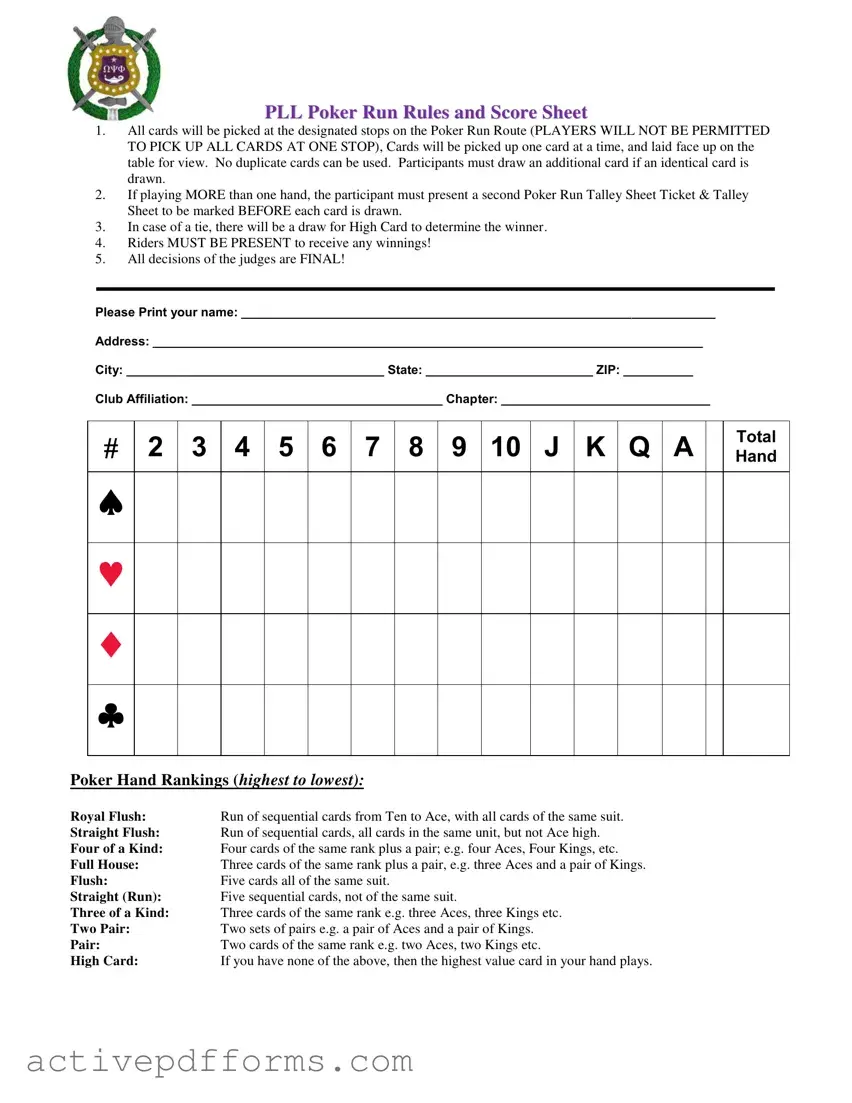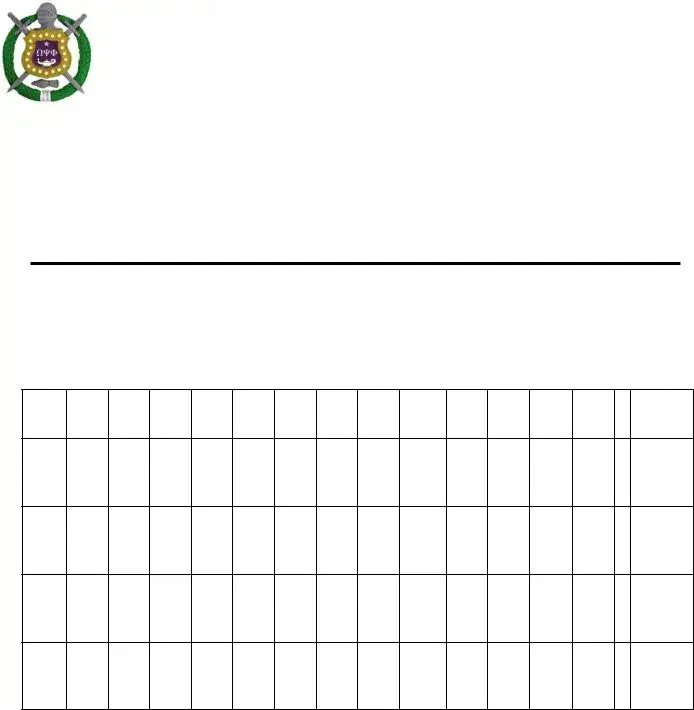PLL Poker Run Rules and Score Sheet
1.All cards will be picked at the designated stops on the Poker Run Route (PLAYERS WILL NOT BE PERMITTED TO PICK UP ALL CARDS AT ONE STOP), Cards will be picked up one card at a time, and laid face up on the table for view. No duplicate cards can be used. Participants must draw an additional card if an identical card is drawn.
2.If playing MORE than one hand, the participant must present a second Poker Run Talley Sheet Ticket & Talley Sheet to be marked BEFORE each card is drawn.
3.In case of a tie, there will be a draw for High Card to determine the winner.
4.Riders MUST BE PRESENT to receive any winnings!
5.All decisions of the judges are FINAL!
Please Print your name: ____________________________________________________________________
Address: _______________________________________________________________________________
City: _____________________________________ State: ________________________ ZIP: __________
Club Affiliation: ____________________________________ Chapter: ______________________________
2 3 4 5 6 7 8 9 10 J K Q A |
Total |
Hand |
Poker Hand Rankings (highest to lowest):
Royal Flush: |
Run of sequential cards from Ten to Ace, with all cards of the same suit. |
Straight Flush: |
Run of sequential cards, all cards in the same unit, but not Ace high. |
Four of a Kind: |
Four cards of the same rank plus a pair; e.g. four Aces, Four Kings, etc. |
Full House: |
Three cards of the same rank plus a pair, e.g. three Aces and a pair of Kings. |
Flush: |
Five cards all of the same suit. |
Straight (Run): |
Five sequential cards, not of the same suit. |
Three of a Kind: |
Three cards of the same rank e.g. three Aces, three Kings etc. |
Two Pair: |
Two sets of pairs e.g. a pair of Aces and a pair of Kings. |
Pair: |
Two cards of the same rank e.g. two Aces, two Kings etc. |
High Card: |
If you have none of the above, then the highest value card in your hand plays. |

